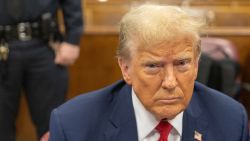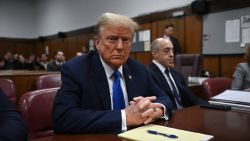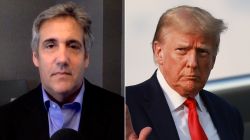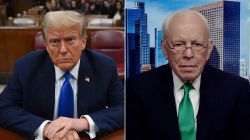Editor’s Note: Michael Bociurkiw is a global affairs analyst and a former spokesman for the Organization for Security and Cooperation in Europe. Follow him on Twitter @WorldAffairsPro. The opinions expressed in this commentary are his; view more opinions on CNN.
More than five years after the crash of MH17 in eastern Ukraine, once again the spotlight is on Ukrainian aviation following the crash Wednesday morning of a Ukrainian International Airlines (UIA) Boeing 737-800 in Tehran.
The Dutch-led investigation in the 2014 case determined beyond a doubt that MH17 – a Boeing plane with 298 people aboard – was downed by a Russian Buk missile fired by Kremlin-backed rebels. It may take some time to determine the cause of the crash of UIA Flight PS752 with 176 passengers and crew, including 82 Iranians and 63 Canadians.
However that investigation plays out, this tragedy and the effort to uncover what caused it are both unfolding against the backdrop of a highly politicized and turbulent moment, with tensions between Iran and the United States keeping much of the world on tenterhooks.

My experience working on the MH17 crash as part of a team from the Organization for Security and Co-operation in Europe (OSCE) has taught me that, in order to reach credible findings that will satisfy both the families of the victims and the grieving nations, all parties involved must put politics aside and invite as wide an investigation as possible.
This is a golden opportunity for Iran to turn a tragedy into a humanitarian opportunity, since the passengers aboard the flight were not combatants, but innocent civilians.
The crash in Tehran resulted in wreckage being scattered over an area of at least two acres, suggesting a midair explosion. Whatever happened in the seconds leading up to the crash, it must have been instantaneous and catastrophic as the crew did not communicate any problems to air traffic control and no automated alert signals came from the airplane.
Just hours after the crash, it appeared that Iran was trying to blame the crash on a mechanical failure in the US-made plane – a conclusion they couldn’t have possibly reached with certainty so soon.
The airline promptly cast doubt on any troubles with the three-and-a-half-year-old Boeing 737-800 or on pilot error.
“It was one of the best planes we had, with an amazing, reliable crew,” Yevhen Dykhne, the airline’s president, said at a briefing following the crash.
Shortly after the crash, which occurred after the plane departed the Iranian capital’s Imam Khomeini International Airport, Iranian leaders said the US would not be involved in any stage of the investigation – including analysis of the flight voice and data recorders – paving the way for what is likely to be an agonizing wait for credible answers for the families of the victims.
Opinion: What Iran strike means for the US
Under international convention, it would be customary to invite investigators from the country where the aircraft and its engines were manufactured – as well as those from the state which operates and owns the aircraft and countries directly affected by the tragedy. This happened with the investigation of MH17, which had five countries as members of the Joint Investigation Team.
Even if Iranian investigators determine the cause of the crash, the lack of international involvement may call their ultimate findings and conclusions into question.
Given the high number of nationalities represented by those on board and the need for Iran to contain further harm – US President Donald Trump announced more economic sanctions “until Iran changes its behavior” – it needs to keep politics out of the crash investigation, invite international experts and investigators to determine the cause and keep grieving families well-informed.
Bungling or manipulating the crash investigation will likely bring Iran further international opprobrium, isolation and the risk of damaged relations with relatively friendly grieving nations such as Ukraine, Canada and the United Kingdom.
Working together on a shared goal of getting to the bottom of the tragic crash by inviting international investigators could go a long way in preserving Iran’s relationships among the few Western allies it has left.
One other question investigators need to ask is how, after Iran launched missile strikes against bases housing US troops in Iraq, UIA reached its decision to continue flights to Tehran? Some (though not all) international carriers, for instance, opted to suspend flights to Baghdad.
Ukraine previously came under criticism by the Dutch Safety Board in 2015 following the crash of MH17 for not completely closing its air space to civilian traffic amid escalating fighting at the time in eastern Ukraine. (MH17 was flying just above the closed air space when it was struck by a missile).
Volodymyr Zelensky’s administration needs to go out of its way to support a transparent and independent crash investigation – especially given that Zelensky and UIA part owner Ihor Kolomoisky have shared previous business ties. Zelensky reached out Thursday to UK Prime Minister Boris Johnson and Afghan President Mohammad Ashraf Ghani to offer condolence, and, in what is hopefully a good sign for the future, said in a statement that “Truth is most important to us.”
If mechanical issues with the plane are found to be a factor, it will be important to determine if UIA cut corners with maintenance (the airline says the plane had its last maintenance check on Monday.)
The future of UIA – which is already facing dire financial straits – depends on Ukrainian authorities and the airline proving beyond a doubt that safety is its No. 1 priority.
The stakes in this crash are extremely high for many parties, including Boeing, Ukraine and, most of all, Iran. As my MH17 experience taught me, obtaining credible answers is the only way to help the relatives obtain some semblance of closure and restore global public confidence.





















